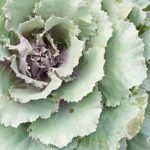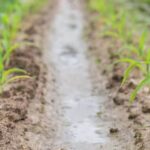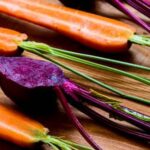Texas fruit and vegetable gardening is a popular and rewarding activity for many residents of the Lone Star State. With its diverse climate and soil conditions, Texas offers a unique challenge and opportunity for gardeners to grow an abundance of delicious produce right in their own backyards. From the Gulf Coast to the Panhandle, there are specific considerations and best practices that can help Texas gardeners succeed in cultivating a thriving garden.
When it comes to Texas fruit and vegetable gardening, understanding the state’s climate and soil is crucial for success. From the sweltering heat of summer to the occasional winter freeze, Texas experiences a wide range of weather patterns that impact what can be grown in different regions of the state. Additionally, the varied soil types across Texas present both challenges and opportunities for gardeners looking to grow a variety of fruits and vegetables.
In this comprehensive guide, we will explore everything you need to know about Texas fruit and vegetable gardening – from climate and soil considerations, to the best fruits and vegetables to grow in Texas, as well as tips for successful gardening, seasonal planting guides, pest management strategies, harvesting techniques, and valuable resources for all Texas fruit and vegetable gardeners alike.
Whether you are a seasoned gardener or just starting out, this article aims to provide you with the knowledge and tools necessary to cultivate a bountiful harvest in your very own Texan garden.
Climate and Soil Considerations for Texas Gardening
Texas has diverse climates and soils that can present a challenge to gardeners. It is important to understand the unique climate and soil considerations when planning a fruit and vegetable garden in Texas.
Climate:
When it comes to climate, Texas can be divided into several distinct regions, each with its own unique weather patterns. From the hot and humid Gulf Coast region to the arid and semi-arid regions of West Texas, the state offers a wide range of growing conditions for gardeners.
It is essential to select fruits and vegetables that are well-suited to the specific climate of each region. Some recommended fruits for Texas fruit and vegetable gardening include peaches, plums, figs, and blackberries, which thrive in the warm climate of Texas.
Soil:
The soil in Texas also varies greatly from region to region. While some parts of the state have sandy or loamy soils, others have clay soils with poor drainage. Before planting a fruit or vegetable garden, it is important to test the soil in order to understand its composition and fertility levels.
Knowing the pH level of the soil is also crucial for selecting suitable plants for your garden. For example, blueberries prefer acidic soil with a pH level between 4.5 and 5.5, while tomatoes thrive in slightly acidic soil with a pH level between 6.0 and 7.0.
In addition to understanding the specific climate and soil conditions in your area, it is also helpful for Texas gardeners to consider using raised beds or container gardening to overcome any challenges presented by local soils or limited space.
Best Fruits to Grow in Texas
When it comes to Texas fruit and vegetable gardening, the state’s diverse climate and soil conditions provide a wide range of opportunities for growing delicious and nutritious fruits. Whether you are a seasoned gardener or just starting out, choosing the best fruits to grow in Texas can be an exciting and rewarding experience.
One of the top fruits to consider growing in Texas is the beloved peach. With over 30 different varieties thriving in the state, peaches are well-suited to the warm climate and well-drained soils. Additionally, fig trees are another excellent fruit option for Texas gardeners. These hardy trees require minimal maintenance and produce sweet, juicy figs that are perfect for snacking or baking.
For those looking to add some tropical flair to their gardens, consider planting citrus trees such as oranges, grapefruits, and lemons. Texas’s southern regions offer a suitable environment for these trees to flourish. Finally, if you have a bit more space in your garden, try growing plums or pomegranates which are also well-adapted to Texas conditions.
While there are many other fruits that can thrive in Texas, these options provide a good starting point for any gardener eager to enjoy fresh, homegrown produce straight from their backyard. With proper care and attention to the unique needs of each fruit variety, you can create a bountiful garden that will provide you with an abundance of healthful treats all year round.
| Fruit | Growing Conditions |
|---|---|
| Peaches | Warm climate and well-drained soils |
| Figs | Minimal maintenance; well-suited for different soil types |
| Citrus (oranges, grapefruits, lemons) | Southern regions with sunny weather |
Best Vegetables to Grow in Texas
The diverse climate and soil conditions in Texas make it a great place for growing a wide variety of vegetables. Whether you live in the humid Gulf Coast, the arid desert regions, or the temperate hill country, there are plenty of options for successful vegetable gardening.
One popular option for Texas vegetable gardening is peppers. The hot and dry climate in many parts of the state is perfect for growing peppers, including jalapenos, bell peppers, and serranos. These plants thrive in the heat and can withstand periods of drought, making them an ideal choice for Texas gardeners.
Another excellent vegetable to grow in Texas is okra. This southern favorite loves the heat and will produce abundantly throughout the warm summer months. Okra plants also have beautiful blossoms that add visual interest to any garden. In addition to being heat-tolerant, okra is also resistant to many common garden pests and diseases.
Tomatoes are a staple of Texas fruit and vegetable gardening. With proper care and attention to water and soil conditions, tomatoes can thrive in all parts of the state. From cherry tomatoes to hearty beefsteak varieties, there are numerous types to choose from when selecting tomato plants for your Texas garden.
| Vegetable | Best Growing Conditions |
|---|---|
| Peppers | Hot and dry climate with well-drained soil |
| Okra | Heat-tolerant with resistance to pests |
| Tomatoes | Proper water and soil conditions needed |
Tips for Successful Gardening in Texas
When it comes to successful Texas fruit and vegetable gardening, there are a few key tips to keep in mind that can help ensure a bountiful harvest. The unique climate and soil conditions in Texas require specific strategies to optimize garden growth and productivity. Here are some essential tips for successful gardening in the Lone Star State:
- Choose the right plants: Selecting the proper fruits and vegetables that are well-suited for Texas growing conditions is crucial. Opt for heat-tolerant varieties that can withstand the hot and dry summers, such as tomatoes, peppers, okra, watermelon, cantaloupe, and sweet potatoes.
- Water wisely: Proper watering is essential for successful gardening in Texas. During hot summer months, it’s important to water your garden deeply and less frequently to encourage deep root growth and drought tolerance. Consider using drip irrigation or soaker hoses to deliver water directly to the roots while minimizing evaporation.
- Protect from extreme weather: Be prepared to protect your garden from extreme weather events such as hail, high winds, or late spring frosts. Utilize row covers, hoop houses, or shade cloth to shield your plants when needed.
In addition to these tips, it’s important for gardeners in Texas to stay informed about local planting dates and growing seasons. Understanding the nuances of each region within the state can greatly impact the success of a garden. By being mindful of these key factors and implementing strategic gardening practices, Texas fruit and vegetable gardeners can cultivate thriving gardens year after year.
Seasonal Gardening Tips and Planting Guide for Texas
Spring Planting
In Texas, spring is the perfect time to start planting a variety of fruits and vegetables. Some popular options for this season include tomatoes, peppers, squash, cucumbers, and strawberries. It’s important to ensure that all danger of frost has passed before planting these heat-loving crops.
Summer Care
As the temperatures rise in Texas, it’s crucial to provide adequate water and mulch for your garden. Watering deeply and infrequently can help the plants develop strong root systems. Additionally, using organic mulch can help retain moisture in the soil and suppress weeds. Consider shading young plants from the intense afternoon sun to prevent wilting.
Fall Harvesting
When fall rolls around in Texas, it’s time to harvest the fruits of your labor. Depending on what you’ve planted, this could include juicy watermelons, sweet potatoes, bell peppers, okra, or various herbs like basil and thyme. Keep an eye on the weather forecast as well, as a sudden cold snap could damage some of your crops.
This seasonal gardening guide will help Texas fruit and vegetable gardeners make the most of their growing seasons by providing specific tips for each stage of the year. By following these guidelines, gardeners can maximize their yields while minimizing the impact of unpredictable Texas weather on their precious plants.
Pest and Disease Management for Texas Gardeners
Common Pests in Texas Gardens
Texas fruit and vegetable gardening comes with its share of challenges, including pests that can wreak havoc on your carefully tended plants. Some common pests to watch out for in Texas gardens include aphids, whiteflies, caterpillars, and squash bugs. These pests can cause damage to fruits, vegetables, and foliage if not managed effectively.
Effective Pest Management Strategies
To protect your Texas fruit and vegetable garden from these pests, it’s important to implement effective pest management strategies. One approach is to encourage beneficial insects such as ladybugs and lacewings that naturally prey on garden pests. Additionally, using row covers and insect netting can help protect plants from infestations. For more severe pest problems, organic sprays or insecticidal soaps can be used as a targeted solution.
Disease Prevention and Treatment
In addition to pest management, Texas gardeners also need to be proactive in preventing and treating plant diseases. Common diseases in the region include powdery mildew, bacterial spot, and blight. Proper plant spacing, adequate air circulation, and avoiding overhead watering can help prevent the spread of diseases. If an outbreak occurs, using fungicidal sprays or treatments specific to the type of disease can help control the problem.
By being vigilant in managing pests and diseases in your Texas fruit and vegetable garden, you can maintain healthy plants and ensure a bountiful harvest at the end of the season. Understanding the common pests and diseases prevalent in your area is essential for successful gardening in Texas.
Harvesting and Preserving Your Texas Garden Bounty
Once your Texas fruit and vegetable garden has flourished and produced a bountiful harvest, it’s important to know how to properly harvest and preserve your crops. Whether you have an abundance of tomatoes, peppers, strawberries, or peaches, these tips will help you make the most out of your Texas garden bounty.
When it comes to harvesting your fruits and vegetables, timing is key. Different crops have specific signs that indicate they are ready for picking. For example, tomatoes should be picked when they are fully colored and firm, while peppers can be harvested when they reach the desired size and color. It’s important to research the best time to pick each type of produce to ensure optimal flavor and quality.
Once you’ve harvested your fruits and vegetables, it’s time to preserve them for future use. Canning, freezing, drying, and even fermenting are popular methods for preserving Texas garden produce. Canning is a great option for preserving fruits such as peaches and strawberries, while freezing works well for vegetables like beans and corn.
Drying herbs like basil and oregano is also a popular method of preservation in Texas. By learning how to properly preserve your harvest, you can enjoy the fruits of your labor long after the growing season has ended.
In addition to traditional preservation methods, Texans can also take advantage of pickling their summer bounty. With an abundance of cucumbers, okra, and jalapenos in the garden during the warmer months, pickling is a fun way to extend the shelf life of these crops and add unique flavors to meals throughout the year. Whether it’s pickled green beans or spicy pickled okra, preserving produce through pickling adds a tangy twist to Texas fruit and vegetable gardening.
Resources for Texas Fruit and Vegetable Gardeners
In conclusion, Texas fruit and vegetable gardening offers a wealth of opportunities for gardeners to enjoy fresh produce all year round. With the right climate and soil considerations, gardeners in Texas can grow a wide variety of fruits and vegetables to suit their preferences and needs. From the hardy citrus trees that thrive in South Texas to the leafy greens that flourish in the cooler northern regions, there is no limit to what can be achieved in a Texas garden.
For those looking to start or expand their Texas fruit and vegetable gardening efforts, it’s essential to take advantage of available resources. Whether it’s seeking advice from local extension offices, joining community gardening groups, or attending workshops and classes specifically tailored for Texas gardeners, there are plenty of opportunities for learning and sharing knowledge.
Additionally, utilizing online resources such as websites, forums, and social media groups can provide valuable insights and support from experienced individuals who have successfully navigated the challenges of Texas gardening.
In essence, Texas fruit and vegetable gardening is not just a hobby; it’s a way of life that fosters sustainability, self-sufficiency, and connection to nature. Despite the unique climate challenges that come with gardening in Texas, with proper planning, care, and utilization of resources, anyone can experience the joy of growing their own bountiful harvest right in their backyard.
Whether you’re a novice gardener or an experienced one, taking advantage of the abundance of information available will undoubtedly lead to success in your Texas fruit and vegetable gardening endeavors.
Frequently Asked Questions
What Fruits and Vegetables Grow Well in Texas?
Texas has a long growing season, so many fruits and vegetables thrive in its climate. Some common fruits grown in Texas include watermelon, cantaloupe, and peaches. For vegetables, options like tomatoes, peppers, okra, and squash do well in the Texas heat.
What Month Do You Plant Vegetables in Texas?
The best month to plant vegetables in Texas varies depending on the specific vegetable and the region within the state. Generally, however, many vegetables are planted in late winter or early spring to take advantage of the mild weather and ensure a good harvest before the scorching summer temperatures.
Can You Have a Vegetable Garden Year Round in Texas?
Yes, it is possible to have a vegetable garden year-round in Texas with careful planning. During the hot summers, heat-tolerant vegetables like tomatoes, peppers, eggplant, and okra can be grown.
In the cooler months, crops like leafy greens, broccoli, carrots, and radishes thrive in Texas’s milder temperatures. With some attention to seasonal variations and climate conditions, year-round gardening is feasible in Texas.

If you’re looking to get into vegetable gardening, or are just looking for some tips on how to make your current garden better, then you’ve come to the right place! My name is Ethel and I have been gardening for years. In this blog, I’m going to share with you some of my best tips on how to create a successful vegetable garden.





